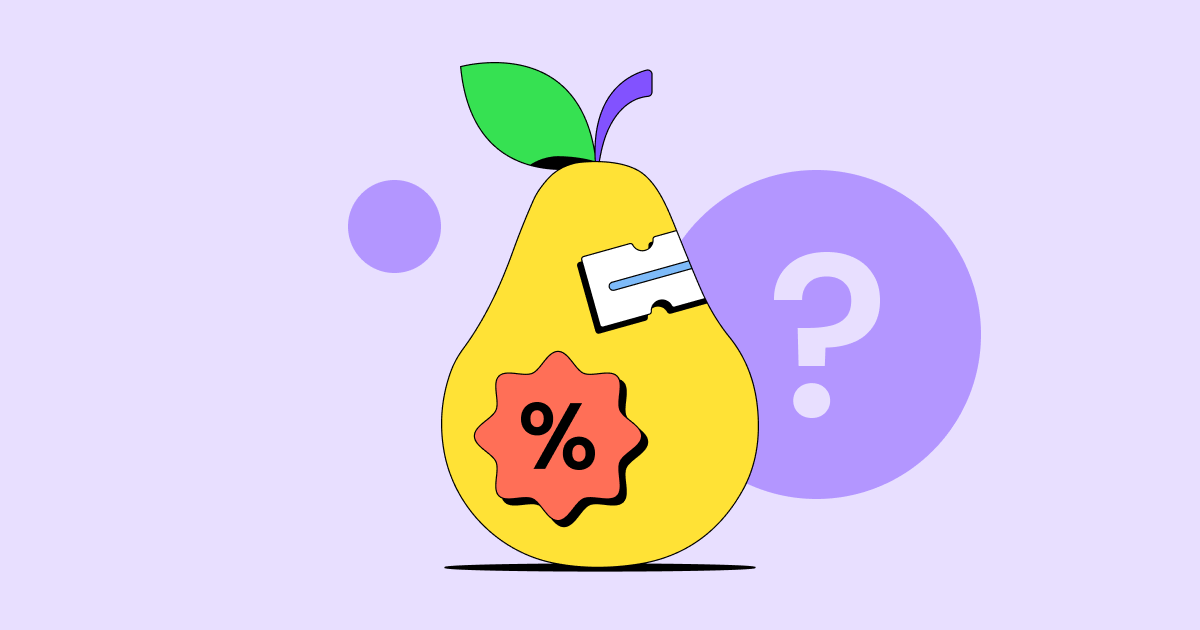In today’s economy, many feel the need to tighten their belts financially. Cutting expenses on unnecessary purchases is the obvious choice. But what if you can save some extra cash by limiting your budget for what is necessary?
An average American spends more than 11% of his income on groceries, reports the US Department of Agriculture. For a family, the number might go even higher up, nearing $1.000 per month for a family of four.
Saving money on groceries will not necessarily lead to reduced quality of meals. With wise planning, careful shopping, and a little creativity, you can significantly cut down your grocery bills while still enjoying nutritious and tasty meals.
This guide will give you practical tips and strategies on how to save money on food to help optimize your food budget further.
15 Tips for Saving Money at the Grocery Store
1. Meal Planning
What it is: Meal planning steps include finding recipes, checking your supplies, and making a shopping list for at least a week. By reducing unnecessary foods like sweets, you can also combine saving money and having a healthier diet.
You can buy higher volumes of groceries with longer expiration dates that have discounts so that you would not waste your money on full prices every week.
How to do it: Plan meals that use similar ingredients to reduce waste, and think of creative use of leftovers to combine them into new meals.
Savings potential: 10%-15% on total grocery costs, so if you spend, let’s say, $350 per month on groceries, this method would save you $35-$53.
2. When to Go Shopping
What it is: Go to the stores only when they are less crowded and when discounts are likely. Also, don’t forget to have grocery shopping lists first and avoid any additional groceries that you have not added to the list just because you saw them and felt the urge to buy.
How to do it: Shop early in the morning or late at night, and avoid shopping when hungry to save money on groceries.
Savings potential: Up to 10%, thanks to fewer impulse purchases and finding markdowns. That would roughly save you an additional $35.
3. Stick to a Shopping List
What it is: Make a list based on your meal plan and try sticking to it.
Supermarkets try every possible tactic to lure you into buying things you would not have in your cart otherwise. Groceries are put in the shops purposefully this way that would make you see more groceries just on your way to get the most necessary ones.
Your goal is to stay focused and not allow the grocery stores to foist you what you don’t need.
How to do it: Write down only what you need and avoid deviating from it.
Savings potential: 20% by avoiding impulse buys (around $70 per month).
4. Comparison Shopping
What it is: Compare prices between different grocery stores. That might cost you more time, but you will get the return to your pocket.
How to do it: Check circulars or apps to see which store offers the best deals. Compare similar products and choose those with lower prices if their quality is not significantly worse.
Savings potential: 10%-20% on various items ($35-70).
5. Bulk Purchasing
What it is: Buy non-perishable and freezable items in bulk. Also, consider groceries with a long-lasting expiration date. Even more so when you notice discounts.
You will soon run out of individual packages. However, products that correspond to your meal plan when bought in bulk will feed you for an extended period.
How to do it: Purchase larger quantities of frequently used items like rice, pasta, or meat when they’re on sale. Just make sure you have enough storage space and the necessary conditions to stock those groceries.
Savings potential: 15%-25% by taking advantage of bulk pricing (up to $88 per month).
6. Calculate the Unit Prices
What it is: Compare the unit price to ensure you’re getting the best deal.
The lower price of a particular item might confuse you since the same item in a more sizable container almost always costs less. For instance, olive oil from the same brand in a vast bottle will be cheaper even though the total price will be higher because it contains more oil.
How to do it: Look at the price per kilogram, ounce, or pound (depending on your country), usually listed on shelf tags, to compare value.
Savings potential: 5%-10% per item.
7. Choose Generic Items
What it is: Opt for store-brand items or generic products instead of name brands. Those will be significantly cheaper but not always have equally worse quality.
How to do it: Compare ingredient lists to ensure quality is similar.
Savings potential: 20%-30% per item.
8. Consider Online Grocery Stores
What it is: Some online stores offer lower prices, especially for bulk or non-perishable items. Consider trying them from time to time. They will save you a lot of time and provide a more effective way to compare prices and avoid items outside your shopping list.
How to do it: Compare online prices and factor in shipping or delivery fees. Be aware and ensure that the delivery price doesn’t exceed what you are saving in your total sum.
Savings potential: 5%-15% on selected items.
9. Buy In-Season Products
What it is: Seasonal fruits and vegetables are often cheaper and fresher, so buying them at the right time will not damage your wallet so much. For instance, vegetables are less expensive in spring.
Also, you can get multiple discounts after big holidays when supermarkets have more items for a higher demand, which plummets right after the hype is over.
How to do it: Base your meals around what’s in season locally and target those groceries when shopping.
Savings potential: 10%-20% on fresh products (up to $70 per month if you will use this method wisely).
10. Avoid Pre-prepared Foods
What it is: Skip pre-cut vegetables, prepared meals, or shredded cheese. These products take longer to prepare. Therefore, the price includes the compensation for the work done.
In addition, they are less healthy, for they are prepared in a fast-paced environment focusing mainly on quantity and external looks rather than quality and healthiness.
How to do it: Buy whole foods and prepare them yourself. Again, it will cost more time but will save money on groceries. You will exchange your time and skills for money, just like at work.
Savings potential: 20%-30% on those convenience items (over 100$ per month).
11. Grocery Store Apps and Loyalty Programs
What it is: Many stores offer discounts through apps and loyalty programs. Some will offer the majority of discounts only for the store’s card owners. You must sign the necessary agreements to be in this position.
The store will collect your data and profile your shopping habits. But if you stay vigilant and use the provided benefits strategically, you will hack the store to your advantage and lower your grocery budget.
How to do it: Download your store’s app or get a discount card at your local grocery store, join its loyalty program, and browse coupons to apply.
Savings potential: 5%-15% on total shopping ($18-$53 per month).
12. Freezing and Canning
What it is: Preserve seasonal or bulk-bought items for later use. Our world is known for waste, including expired or rotten food. Preserving these foods will also preserve the planet and your wallet.
How to do it: Freeze meats and bread, and can fruits and vegetables for future meals.
Savings potential: 10%-20% by reducing spoilage (up to $70 per month).
13. Grow Your Own Food
What it is: Home gardening can save on vegetables and herbs. These products at the grocery stores include the price of growing and taking care of them. If you do this part for yourself, you will only pay for seeds and maintenance costs.
It will cost some of your time, but you will get healthier and more cost-effective counterparts of what you find in the supermarket.
How to do it: Find the basic info about growing your food and start with easy crops like tomatoes, lettuce, or basil.
Savings potential: Up to 100% on herbs and small vegetables.
14. Creative Use of Leftovers
What it is: Repurpose leftovers into new meals to reduce waste and grocery budget. Sometimes, you can get an entirely new meal from what you have left. Other times, you can mix new products with leftovers to enrich your diet without spending more on all ingredients.
How to do it: Plan dishes that use leftovers, like soups, stir-fries, or casseroles.
Savings potential: 5%-10% by reducing food waste (up to $70 per month).
15. Involve the Whole Family
What it is: Engage the family in meal planning, prepping, and budgeting. Since you all need to eat, the collective effort will not only lead to a lower budget but might produce insightful ideas on how to save money on groceries.
How to do it: Assign tasks like finding deals, helping with meal prep, or tracking costs.
Savings potential: Varies, but helps reduce food waste and builds cost-effective shopping habits.
Practical Methods for Saving on Groceries
6-1 and other Grocery Shopping Rules
The 6-to-1 Grocery Method is a practical and structured approach to grocery shopping designed to help people save money on groceries and make healthier choices. It was introduced by Chef Will Coleman and gained popularity on TikTok in 2025.
The system works by dividing your grocery purchases into a countdown formula:
- 6 vegetables
- 5 fruits
- 4 proteins
- 3 starches
- 2 sauces or spreads
- 1 “fun” item (it can be a snack or treat)
This diet will not only save money on groceries but will also allow you to have a healthy and balanced diet that also includes some treats to not make you go crazy for reducing what you want to eat for the sake of health or budget.
You can use different variations of this method. For instance, you can use a 5-4-3-2-1 rule where you reallocate the food groups by not going too far away from the original idea. That will allow you to keep the perfect balance.
This system helps control impulse spending and ensures you focus on priorities first. It allows you to keep unnecessary purchases under 10% of your grocery bill.
How Do I Manage Rising Grocery Prices?
To manage inflation and rising costs, consider the following strategies for weekly groceries:
- Substitute pricier items for cheaper alternatives (e.g., chicken instead of beef).
- Buy in bulk when possible, especially on sale.
- Stick to staple items like rice, beans, and pasta for affordable meal bases.
- Explore community gardens or farmer’s markets for fresh produce at lower prices.
- Limit processed foods, which tend to be more expensive.
You can save 10%-20% by adopting flexible purchasing habits.
$100-a-Month Grocery List
To spend only $100 a month on groceries, you’ll need to focus on low-cost, high-nutrition staples. Here’s an example of what such a list might include:
- Proteins: eggs, canned beans, peanut butter, lentils, and canned tuna.
- Grains: rice, pasta, oats, and flour.
- Vegetables: potatoes, carrots, onions, and frozen vegetables.
- Fruits: bananas, apples, and canned fruit.
- Dairy: powdered milk or small amounts of yogurt.
- Other essentials: spices, salt, and cooking oil.
By building meals around these affordable staples, you can keep your costs low and still prepare satisfying meals.
FAQ
What is a good grocery budget for 3 adults?
A reasonable budget for 3 adults would be around $400-$600 per month, depending on your dietary preferences, shopping habits, and location.
However, by using budgeting strategies presented in this article, you can save a significant portion of such an amount, resulting in reduced costs that would be a few hundred dollars less.
How much should a family of 4 budget for food?
A family of 4 should budget between $700 and $1,200 per month, factoring in a balance of fresh and processed foods, as well as occasional dining out. With a good strategy, you can afford to end up at the lower end of this range.
How much does it cost to eat healthy per month?
Eating healthy can cost between $300 and $600 per person per month, depending on your food choices, location, and whether you buy organic or in bulk.
However, by putting effort into shopping lists, comparing prices, and other meal-planning strategies, you can stay healthy with even less food spending.


